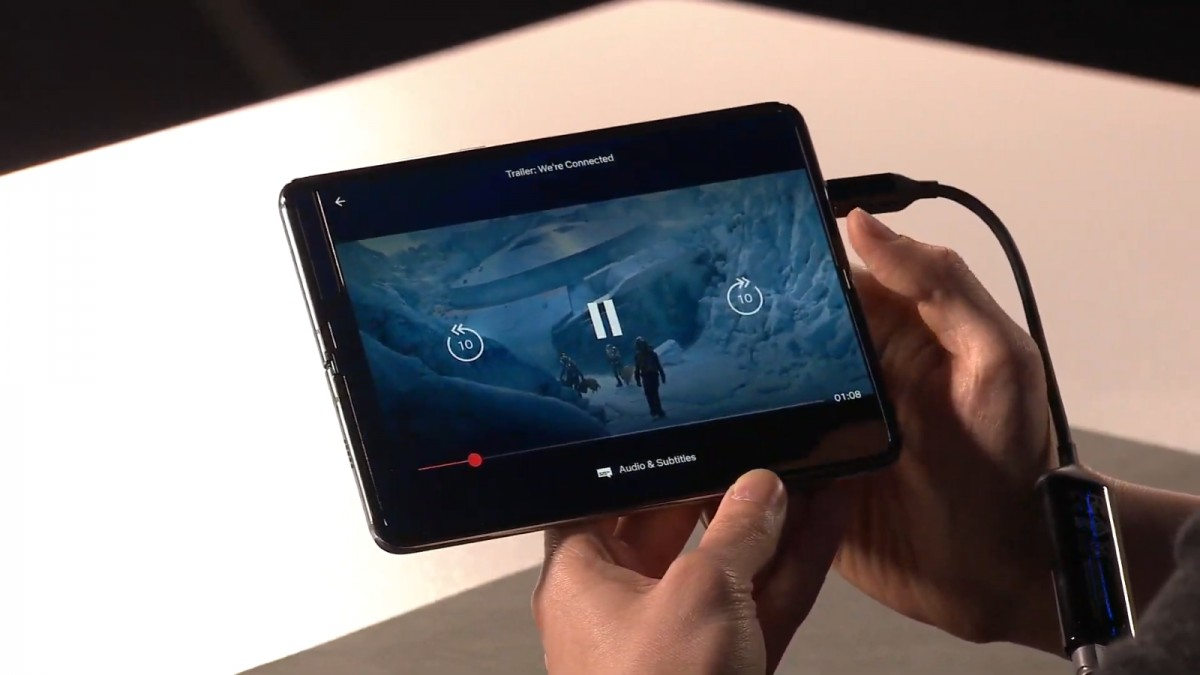
Have you ever tried to stream a video on the bus? You know how it goes: the latest Marvel trailer has just been posted by your friend on Facebook and you don't want to wait until you get home to see what it's all about. Then you tap the link and... hope for the best. If you're lucky, the video will play smoothly on 4G, but if you're unlucky, you'll be able to quickly catch a glimpse of the interrupted action, as a dotted circle tells you that Spider-Man is now buffered. And when that happens, you really can't understand. which is happening because the action has become a mess of low-res color blocks. The problem with 4G is that sometimes there is not enough bandwidth. If too many people try to connect in the same area, your download speed is shared with everyone, which is why it can be so unreliable at times. But fortunately, the solution is imminent. In the next two years, 5G will arrive and transform our mobile video experiences. For starters, watching videos will be much more reliable, especially in terms of download speeds. With the rise of 5G, this means you can expect a lot of ludicrous claims about the ability to download Full HD movies in just a few seconds. Although much faster than 4G, 5G will probably never live up to these claims, simply because you'll always be sharing the link with everyone else in your area. But don't worry, 5G should be about 20 times faster than 4G, and the benefits go beyond speed. 5G uses parts of the electromagnetic spectrum that will allow signals to better penetrate buildings. So you can expect a more reliable connection indoors. If we're lucky, we can even get a reliable signal when traveling to more remote areas when we travel by train. The other major advantage is latency: the speed at which your device can exchange data with the internet. This will be especially important for gamers who need fast response times to play online games like Fortnite, but this will also improve video viewing as there will be less time between reading. A video and its reading.
Second order consequences.
Perhaps even more interesting is to consider the second-order consequences of this technological change, not just how 5G will make downloads faster, but how 5G can change our behavior. For example, today, if you plan to watch Netflix or catch up on Amazon Prime Video, you should plan ahead and download what you want to watch on your device in advance to get the best possible experience. With 5G and near ubiquitous connectivity, streaming will become the default option and you can ensure that bandwidth and connectivity will be available when you need it. Sony's Xperia 10 series includes 21:9 displays for widescreen viewing. Image credit: TechRadar Needless to say, 4K live streaming should also become routine, which will be just in time for 4K phone screens to become commonplace. Of course, 5G isn't just going to change us, it's also going to change how we get movie and TV and upset the industry. This will speed up the process of unbundling and "cutting the cord" because the idea of watching TV will be further disassociated from the need to have Sky or Virgin Media in the UK, Comcast or Verizon in the US - why would we want to pay by packages when applications allow us to download what we specifically want, more than 5G? Given the bandwidth enabled by 5G, it's likely that, like the number of older Gen Yers who have never had a landline, future generations won't even care about the number of seniors. Have a broadband connection at home.
Sony's Xperia 10 series includes 21:9 displays for widescreen viewing. Image credit: TechRadar Needless to say, 4K live streaming should also become routine, which will be just in time for 4K phone screens to become commonplace. Of course, 5G isn't just going to change us, it's also going to change how we get movie and TV and upset the industry. This will speed up the process of unbundling and "cutting the cord" because the idea of watching TV will be further disassociated from the need to have Sky or Virgin Media in the UK, Comcast or Verizon in the US - why would we want to pay by packages when applications allow us to download what we specifically want, more than 5G? Given the bandwidth enabled by 5G, it's likely that, like the number of older Gen Yers who have never had a landline, future generations won't even care about the number of seniors. Have a broadband connection at home.